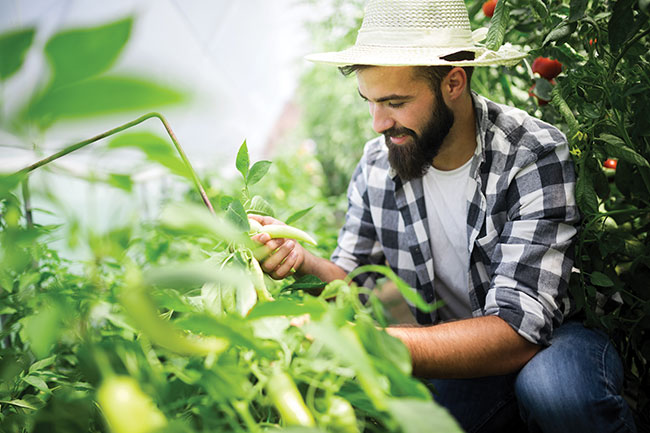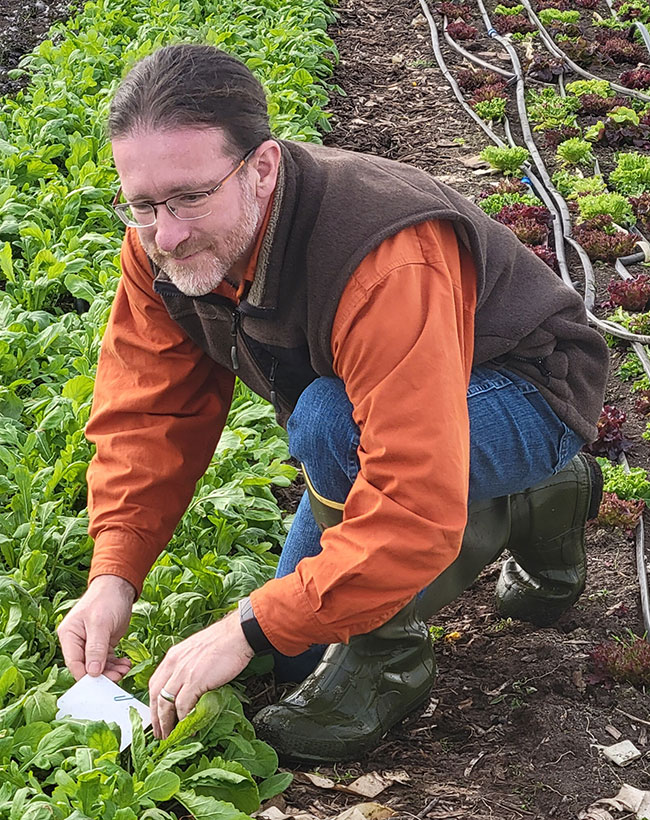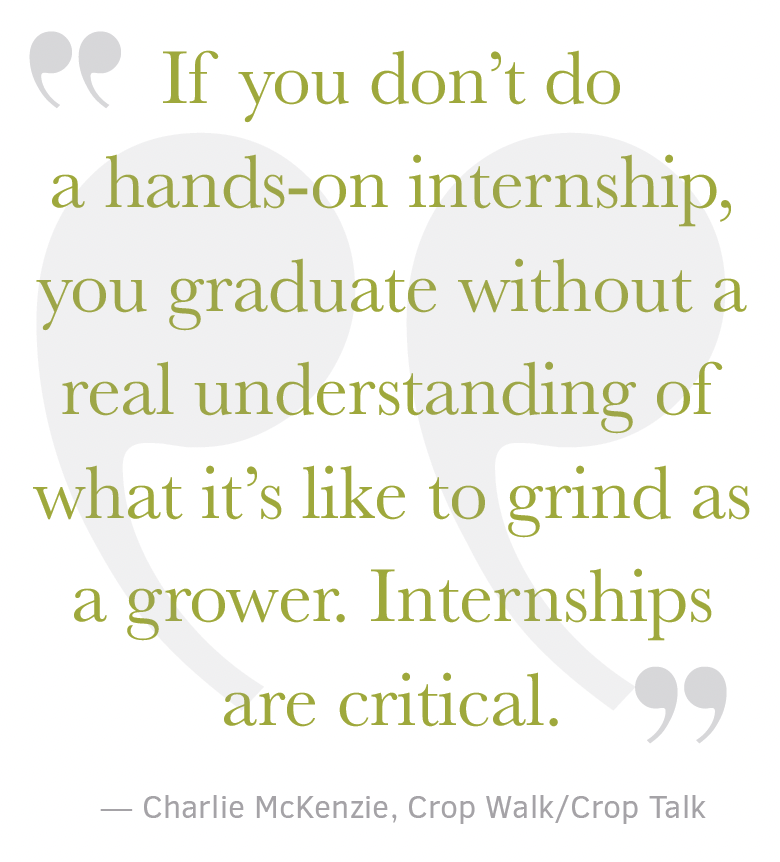
Growing Demand Forecast for CEA Crop Consultants
According to the U.S. Department of Labor, in 2020 the median salary for an agricultural or food scientist was $68,830. The Department of Labor projects 4,400 openings a year for the balance of this decade, or about a 9% annual growth rate. The top-paying states for soil and plant scientists? Maryland, Mississippi, Massachusetts, District of Columbia and North Carolina. Maryland tops out at $107,050.
What’s wrong with this picture? Three of the top-paying states are not what you would consider to be overwhelmingly agricultural or rural, certainly not the District of Columbia. It’s indoor growing that’s driving the change. And, what’s going to happen as more states legalize cannabis is that the need for quality growers is going to increase faster than the supply.
Universities are adapting to this reality. For example, the University of Maryland and the University of the District of Columbia have unique horticulture programs that encompass urban agriculture as being beyond just creating urban gardens.
Not everyone will want to become a greenhouse grower; some will go into consulting. That’s the area we want to discuss with this second article.
Erika Verrier currently works with iUNU, a computer vision company working with greenhouses, and spent much of her previous experience as a vine crop consultant.

“If you’re working with vine crops you could spend half a year with the same crop,” she says. “It’s not like lettuce, where you get to start over every day and you can see the fruits of your labor in a month. One of the challenges of the labor shortage isn’t just not having enough people, it’s not having enough people with experience.”
How does that impact growers coming out of school?
“They need to get enough experience and to have enough repetition, cycles, and patterns to know what to do when a situation deviates from the normal pattern,” Verrier says. “You need someone to believe in you and to allow you to fail. There needs to be a culture in the greenhouse where mistakes can be embraced as learning opportunities. It’s the way people bridge their educational experience with their hands-on experience.”
A conversation with Mark Ledebuhr at Application Insight took a similar vein. Mark’s company works directly in the IPM world developing new application solutions and helping growers find the optimal spray hardware for their unique growing conditions. Employees have to understand both indoor and outdoor spray technology.
“We’re next to Michigan State University,” Mark says. “It’s been worth it to us to form strong relationships with the placement coordinators in relevant departments. We’re not recruiting the whole class, just a few at most, we tend to get really high-quality candidates. It also allows us to focus more on core talent and character.”

We agreed that resumes tell you what someone has done but in terms of predictive capabilities, well, maybe it’s not as data-driven as an AI robotic algorithm for greenhouse monitoring. “Another trick I shouldn’t share is to think as far ahead as possible. When we want to hire someone in May, if we can, we begin the search the prior September. Our goal is to find creative problem solvers that anticipate and get in front of problems before they exist. If you’re looking for a job that far in advance, there’s a better chance that you have what we look for,” he says.
Lastly, Ledebuhr stressed managing expectations. “I’m a GenX-er. I had my first paycheck job at age 14,” he says. “When we hire a college grad now, it’s not uncommon that we may be their first or second employer, so you can’t assume they come with the same basic work experiences. They’re not less capable, just less experienced. The good news is they go through those fundamental building block stages of learning to be a good employee very quickly because they know how to learn. If you skip those steps in employee development that you might have learned earlier in life, both you and the employee will likely be frustrated. Placement offices know this is a place where you’re going to have dirty hands and get to a place where you make real decisions quickly.”
Strikingly, no one has yet complained about or focused on the lack of a particular skill set or a deep need for universities to revamp their programs to account for the rapid rise in agricultural technology. According to Erika and Mark, consultants who are constantly in touch with industry professionals nationwide, it’s not the preparation that is the cause of a labor shortage. Essentially, they’re not seeing recent grads who take an inordinate amount of time to learn how to master today’s platforms, controls, and sophisticated plant monitoring systems.

Almost everyone in the CEA world has heard of Charlie McKenzie and Crop Walk/Crop Talk, and if you haven’t, you probably know someone who has.
“Students are graduating, and they have the technical skills such as substrate moisture, pH; for the most part, they learned those things. What they don’t get a chance to dive into is emotional intelligence, communication, and leadership. There’s a good chance that they’re going to end up as a manager or supervisor very quickly. A lot of them are falling short in being able to connect with the people they work with and to communicate in a way that’s really productive to the business and their career,” McKenzie says.
“Autonomous greenhouses or not, either people are growing the plants or people are managing the technology that grows plants. It still comes down to the human element. What’s the best way to gain those skills?” he adds.
“If you don’t do a hands-on internship, you graduate without a real understanding of what it’s like to grind as a grower. Internships are critical. I left school for six months to spend time as a grower … anywhere from mixing soil substrates to selling the product at the stores. Absent that, I would have had no idea what it’s like to be a grower.
“Internships are the absolute best recruitment tool for growers. If you find three people who can do a great job and they know your processes and they enjoy where they’re working, hire them. We have to focus on helping our people become educated on growing people to grow plants,” McKenzie says.
Three professionals with at least 15 years of experience as highly successful growers looked at the problem and the same theme came up. One of the best ways to train and retain quality growers is for universities to encourage students to experience life in a greenhouse while they’re still students. Employers can significantly reduce turnover and, at the same time, students get a sense of what life will be like as a grower. They experience first-hand what it’s like working in a team atmosphere where everyone doesn’t necessarily have the same skill level or educational level.
Just as importantly, they learn early on in their careers how to successfully manage employees through leadership and communication.


 Video Library
Video Library 




















